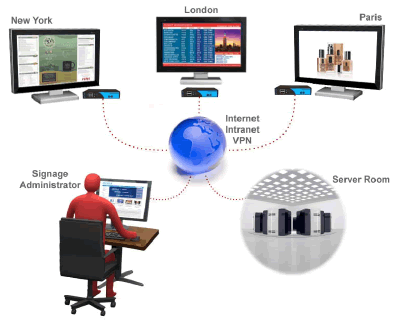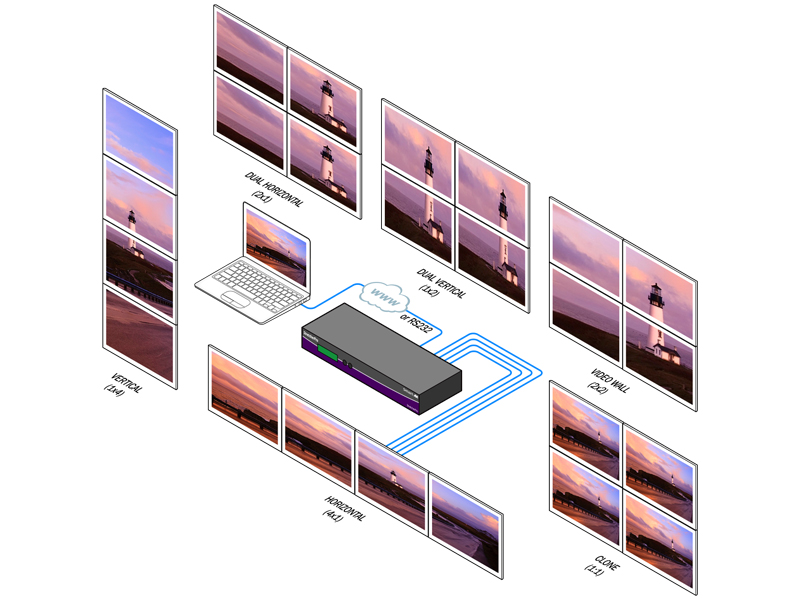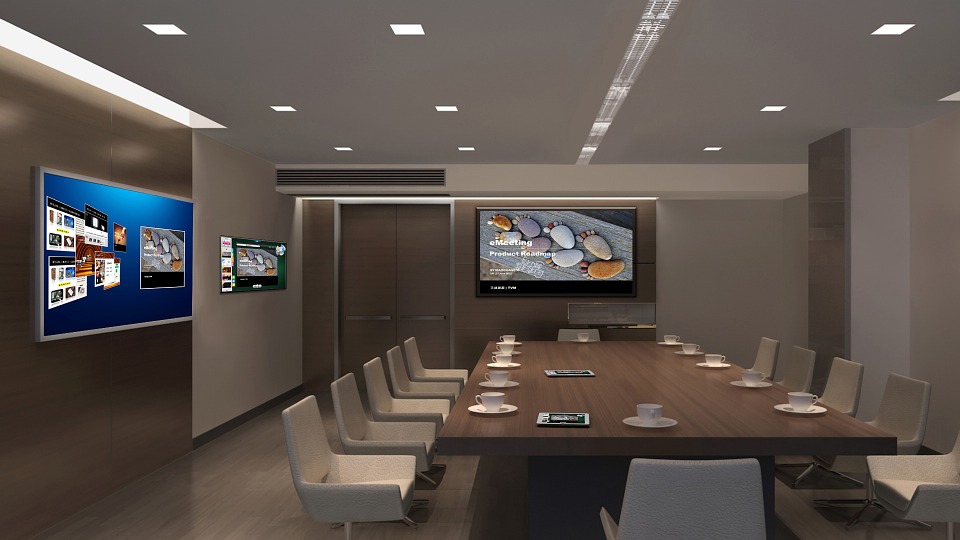Deliver where it Matters!
- Broadcast dynamic, compelling content over a coordinated network of digital displays to deliver your message to your target audience.
- Automate timely, hassle-free messages with complimenting software.
- Plug-and-play or learn the intuitive Pro features to optimize your system for your needs.
Applications | Benefits | Equipment Needed | Factors & Options to Consider | Extra Goodness
What is Digital Signage?
Digital Signage is a system network of content, devices, and cables to meet the goal of presenting relevant and appealing information, both pre-made and live, to more communicate within a high functioning and user-friendly environment.
Stream your message across the globe
from any location.
This streamlined pathway of communication has evolved into one of the most popular methods to providing compelling, location-appropriate content directly to eyes of less observant viewers.


Maximize Sales with the Right Materials
Whether you are choosing kiosks, LCD monitors, HDTVs, touchscreen monitors, plasma screens, electronic billboards, or other media, Digital Signage can help you effectively get your message across.
With Digital Signage technology, you can choose the right interactive visual tools for your digital network needs.
Scalable & Flexible
Create more visibility for your growing business and incorporate any application; i.e. eye-catching advertising, moving menus, live video.

Applications
There are a variety of methods to connect your Digital Signage, by variety we mean endless applications — literally.Some possible applications include:
- In-store advertising
- Employee training
- Campus or community bulletin boards
- Corporate or Franchise communication systems
- Corporate identity branding
- Electronic menus and lobby displays
- Emergency announcement systems
- Interactive kiosks
- Tradeshow displays
- Arrival and departure schedules
Setup could be as simple as a box attached to a TV plugged into a laptop updated once a month or as complex as a matrix system with hundreds of TVs and sources, all independently switchable with live streaming video, like a sports event or news station.
Benefits
What better time to connect with your customers than when they are already in your store looking to buy?
Boost retail sales and increase customer traffic patterns with timely, automated cross-marketing campaigns.
Are you looking to improve your brand recognition, launch new products, or find an additional outlet for co-op marketing?
Build your Brand with instant eye-catching messages and images where it matters most, in front of your customers and target audience.
How do you deliver critical company information throughout your office?
Keep your employees and visitors in the loop with the latest news and updates; ranging from progress toward company goals and event reminders to birthday announcements and inspirational quotes to help lift employee morale.
[widgetkit id=12648]
Equipment Needed
Count on one hand the key elements of a functioning digital signage setup.
The bare essentials generally include:
- Media Source (Slideshow Presentation, DVD player, Media/YouTube Stream)
- Transmitter/Player (Software, Controller Box, Server)
- Receiver (Switchers, Splitters, Scalers)
- Media Player (TV, Projector, Touchscreen)
- Cables (HDMI, CATx, Fiber Optic)

Factors & Options to Consider
There are many factors to take in consideration when building your digital signage system. A few are listed below.
For more digital signage elements:
Thumb through our knowledge base
Extra Goodness, Just for You
Because we want to hear all of our clients have great success with our solutions, we want to share with you some extra inspiration points. Literally, endless applications… to list a few notable scenarios:
Corporate & Hotel Lobbies
Share corporate messages, events, and marketing campaigns while visitors emerge themselves in the environment culture. Have your viewers experience the your brand and entice them with conversation starters.
Sports Venue
Satisfy all sports fanatics with what they want to watch, where they will see it most; plus, add a few interactive features to entice participation and purchases of fan gear and live action games.

Airport Terminals
Sustainable display of airplane arrivals and departures broadcasting throughout the terminals, streaming entertainment to help lower stress and raise morale, and over-ride all presentation screens for emergency messages… and that’s just a few communication methods for the passengers.
Broadcast & Media Facilities
Enabling media professionals to remain agile and competitive via remote-access or relocating computers away from the production environments, edit suites, and control rooms to produce and stream flexible, multi-computer and multi-user operational workflow(s).

Studio & Production Environments
Setup, rearranging, and relocating integral A/V systems has evolved the needs for an ever-changing environment. Routing and re-routing A/V, whether it’s adding/removing screens, switching up interfaces, or simply a set change, multicasing content around the space with absolute reliability and pristine video quality, high performance KVM tools provides to-the-second solutions.
Film & TV Post Production
Supporting the high demand of technology needs during the creative flow within an edit suite while allowing teams to work securely across the world while maintaining a single point of storage is perhaps an efficient goal of a streamlined workflow. Digital signage devices like splitters, extenders, and stretchers can help connect the steps from the conversion and storage process to presenting draft sequences.

60,000+ Client Companies Have Chosen 42U
There’s a reason we’re the #1 choice of so many IT professionals.
Contact us and experience why.

Questions? Call us.
Call in and speak with one of our knowledgeable solutions engineers who will answer any questions you might have.
1-800-638-2638

Explore 42U Solutions
One of our data center solutions specialists will work together with you to find the optimal solution for your system.
[email protected]
Ready to shop for your Remote Power solution today? Visit KVM Switches Online
Digital Signage Glossary
Review some common Digital Signage terms in the Glossary below.
- Activation
- A buying decision motivated at the point-of-purchase by such factors as buying convenience, price, promotion, impulse selection, etc.
- Audience
- In marketing, possible viewers of an ad. This is sometimes used loosely with the word “target” to suggest possible catchments of future buying consumers. The key word is “possible.” Some studies have indicated for example that only 7% of audiences are actually seeing TV and that 23% of time golf programming plays to an empty room. A study by the American Academy of Advertising noted that only 7% of TV viewers attended to a commercial break (6% ignored and 86% actively avoided).
- Brand
- A simple, cohesive identity or consumer impression of a product, service or organization. Branding increases shareholder equity, allows for premium pricing, enables higher gross margins and allows for easier line extensions, and decreases business costs relative to equity achievement. Brands enjoy statistically higher Return on Investment (ROI). The key word is “identity“. Brand speaks about themselves in their position or aspiration to be dominant, challenger, rank or follower.
- Branding
- The actions of gaining a favored view on the part of consumers for a product, service, organization or experience. These actions include advertising, merchandising, demonstration, education (consumers, sales staff, etc.) profile through media, events, etc., co-branding, etc. The measures of branding success include revenues, customer base, share of category revenues, category growth, awareness and perception of brand.
- Business Model
- (see also Ad model, Venue Model): The costs of Digital Signage network are met in different ways. An “Ad Model” creates profit through ad display and sponsorship revenues, coupon redemption commissions and marketing intelligence sales. The costs in a “Venue Model” are considered by the display location provider (typically) as a cost of business or investment toward patron marketing, up-selling, or improving a wait, service or shopping experience. It is common to blend the two business models allowing the benefits of a Venue model with investment offset through sponsorship or advertising. Live private program display and distance learning provide benefit in the both the Ad and Venue Models.
- Category
- A product group that enables a point of reference or comparison with products or services that other similar value or experience of use.
- Channel
- Script that has been published in such a way that when its contents change, the updated material is forwarded to machines running the viewer that have subscribed to the channel.
Synonym: zone. - Content
- Media, clips, text, video and audio that is presented by display and audio devices by a digital signage system.
- Content distribution server
- A computer, server, or device that stores the contents that are distributed to the player in the store.
Synonyms: broadcast server, network manager, content management server. - CPM
- Acronym for COST PER THOUSAND (“M” is the roman numeral for 1,000). CPM is the costing unit used in mass advertising for calibration and comparison of display rates. The CPM level increases with the quality of the audience and scarcity of display opportunity. Display buys will often be bundled to include a range of more and less attractive display spots. This common practice in TV ad sales increases the overall display contract and “averages down” the CPM rate.
- Display Device
- CRT, flat panel LCD, plasma, aerial imaging, projector or other electronic devices that are at the end-point of a digital signage system, presenting the content.
- Digital Signage
- A network of digital displays that are centrally managed and addressable for targeted information, entertainment, merchandising and advertising.
Also referred to as (synonyms): Dynamic Signage, Digital Signs, Electronic Signage, Digital Media Advertising, Digital Signage Network, In-store TV Network, Captive Audience Network, Narrowcasting Network, Out-of-home Media Network, Digital Media Network, Advertising Network. - Demand
- A desire for a product or service. A buying decision is based on brand identity and the impression based on previous purchases and experience of use.
- Effective
- Greater output from the same or less input.
- Emotional Identity
- The way a consumer interprets the identity of a brand.
- Flight
- The display of an ad or other content message on the display.
- Footfall
- Store traffic.
- Intensity of Desire
- “Desire” is not absolute. Creating intensity of desire which will result in revenues is the marketer’s job.
- Multichannel Player
- Outputs multiple streams of unique content to multiple display devices. Synonyms: site server, in-Store server.
- Need State
- The condition of a consumer defining their receptivity to considering and acting upon a brand identity or trial opportunity. For example, when recuperating in from of a TV, a consumer needs different information to encourage intended brand perception than the information needed at a point of purchase to activate a sale
- Organizational Alignment
- Consistency of message content and tone across each delivery mechanism including executive and staff, ads, packaging, public and media relations, etc. each communications is either brand-building or “de-branding”. Inadequate product knowledge can de-brand (and lose the sale) when prospects arrive for purchase with more knowledge than sales staff. The passion and vision of the CEO is lost without communications to “the front lines” of customer service.
- Player
- Presents content to the display device for presentation.
- Triggered Content
- Media that can over-ride planned content when certain pre-determined conditions are realized such as the proximity of a shopper, removal of an item from display for examination or the reading of various inputs such as bar code, loyalty card, biometrics, etc.
- Playlist
- A schedule defining the order and duration of content to be displayed.
- Playlog
- Record of information created from the digital signage system reflecting the content played, the system performance and other data. Synonyms: billing log, performance log, audit log.
- Program Revenues
- When digital signage display and connectivity infrastructure is used to deliver live programming such as new product instructions, training, sponsored events, etc. , non-ad revenues are generated for the signage network owner.
- Recency
- Timely, Relevant impressions.
- Sales Lift
- Revenue increase, usually expressed as a % increase over normal.
- Salience
- Core relevant information. In addition to its relevance as a quality of content for selling or branding, salience can be a determinant and predictor of immediate trial and revenue growth. There is a “vertical” salience, which is a single individual’s knowledge of a brand, and “horizontal” or “social” salience. Salience becomes “horizontal” when information is exchanged between individuals.
- Trial
- First purchase and use of a new product by a consumer. An essential step on the road to recurring revenues. A general rule of thumb is that a prospect will need to hear about a product 7 times before they trial.
- Turnstile
- Total people entering a location.
See More Terms




